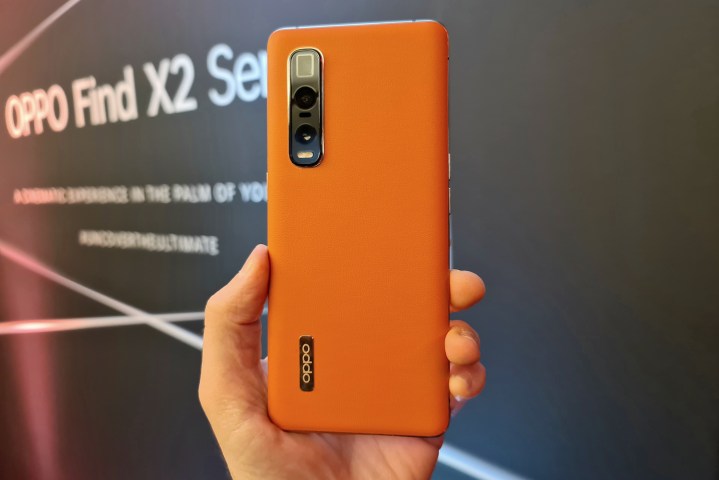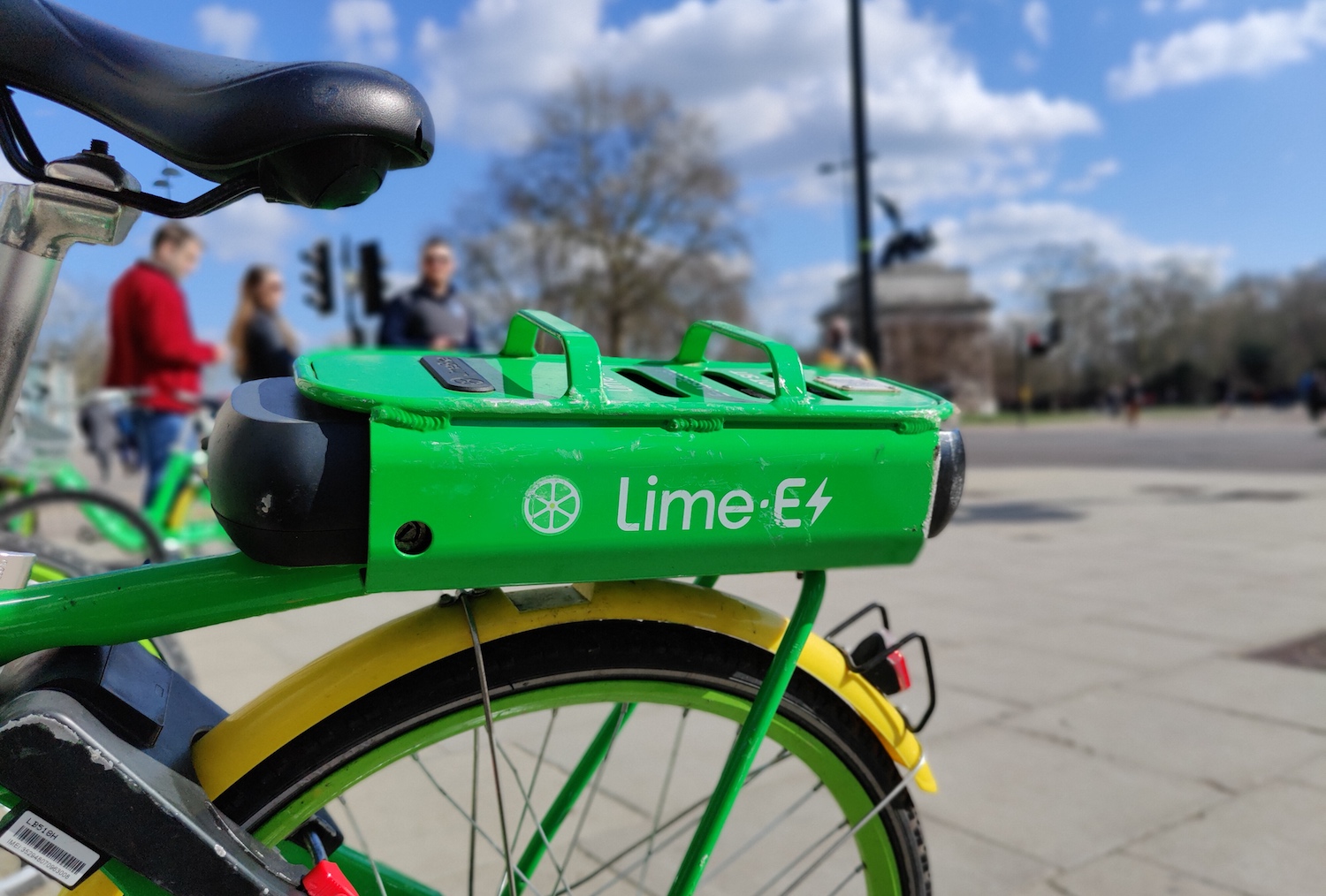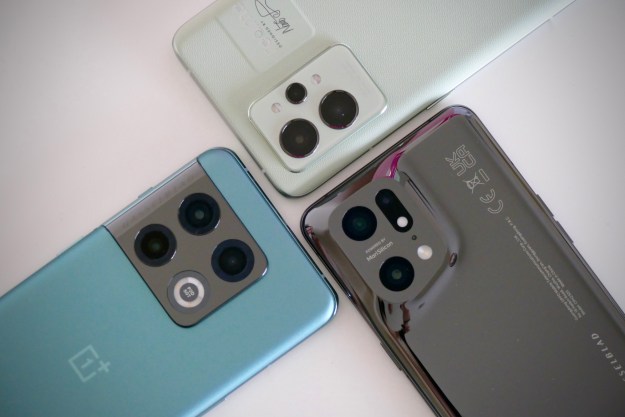
Wrapped in bright orange vegan leather, the Oppo Find X2 Pro is among the most eye-catching, tactile phones of 2020. More importantly, it looks like the Find X2 Pro is Oppo’s most well-rounded phone package to date.
The newly announced Find X2 Pro provides sensory overload out of the box, but what about the rest of the phone? Following the virtual launch event in London, I spent a short time with the Find X2 Pro to see if it lives up to the expectations generated by its fantastic appearance.
Smooth, posh design
While it’s a departure from the futuristic Oppo Find X, which had a form factor unlike anything before it, the Find X2 Pro is still a very attractive phone, reminding me of the 2019 Huawei P30 Pro; the curved screen, the off-center camera bump on the back, and even the vegan leather option itself is borrowed from it. This makes it pretty, well-balanced in terms of design, and comfortable to hold, but it does make it slightly derivative, especially placed alongside its unique predecessor.

This aside, the Find X2 Pro one-ups the Galaxy S20 Ultra’s design offering a pleasing-to-touch ceramic finish, which is not only strong but subtly reflective and glossy, in addition to the delicious leather option. Leather meets gold on this sleek chassis, and the waterfall screen gives the phone a modern and immersive viewing experience.
I love the way the Find X2 Pro feels in my hand; it’s solid, well-made, and not too heavy. The symmetrical body shape and soft leather makes it supremely comfortable to hold as well. It’s not as “leathery” as you may expect, with only a very fine grain, and it doesn’t show fingerprints at all, unlike the ceramic model. Perhaps the only part that doesn’t appeal is the gaudy gold Oppo logo on the leather panel, which says “cheap Italian shirt” rather than “subtle class.” The use of gold won’t be to everyone’s taste, generally.
The “mini cinema” display
Oppo calls the Find X2 Pro a, “mini cinema in your pocket,” and for good reason. The 6.7-inch AMOLED display has a 3,168 × 1,440 pixel resolution making a sharp 513 pixel-per-inch density, 120Hz refresh rate with 240Hz touch sampling, and HDR10 Plus which upgrades SDR video to

It’s beautiful, smooth, detailed, and oh-so-colorful. Just looking at our sample photos, the operating system, and the web is a dazzling experience. However, outside in sunlight it didn’t show as much brightness as I would have liked, something even more noticeable when placed alongside the Samsung Galaxy S20 Ultra.
The curved sides minimize the bezel, and there are only a few millimeters at the top and bottom not taken up by display. It’s mostly screen on the front, but sadly Oppo has abandoned the motorized camera from the Find X and opted for a punch hole camera instead. It’s certainly far less complex, and does let Oppo give the Find X2 Pro an IP68 water and dust resistance rating, but the punch hole is something we’ve seen on many other phones for a while, and therefore the phone lacks the initial visual excitement generated by the Find X’s completely uninterrupted screen.
Camera
There are three camera lenses on the back of the Oppo Find X2 Pro. Notably, it has the exclusive-to-Oppo Sony IMX689, which has a 1/1.4” sensor and 48-megapixels. It’s joined by a second 48-megapixel sensor and a 13-megapixel periscope zoom camera. Oppo makes the bold claim that it’s as “advanced as an entry-level DSLR camera,” and though it is certainly packed full of different modes, I wouldn’t go that far. Most are non-creatively named with the “Ultra” prefix. We have Ultra Night Mode 3.0, Ultra Wide Mode, Ultra Dark Mode, Ultra Macro Mode, and even Ultra Steady Mode.

The zoom has an impressive 10x hybrid setting, while the macro mode can shoot close-ups at just three centimeters distance. Combine these with the wide-angle lens, and the Ultra Dark Mode which Oppo says can take realistic, natural photos in almost complete darkness, and the Find X2 Pro’s camera sounds about as versatile as it gets.
Shooting some photos around London after the launch revealed its daylight abilities. It takes colorful, balanced, and pretty photos with anything up to 10x zoom. The software on the phone I tried is pre-production, so it’s unfair to judge its shortcomings harshly at this stage. That said, there is still some work to be done. The exposure and light differences between lenses, especially at 10× zoom, is terribly inconsistent, there is digital noise when using the Macro mode, and detail gets lost when zoomed that close in. Because this is all likely solved by some tuning, we’d expect it all to be fixed ahead of release.
Ultra Steady Mode for video impressed me, though. Zoomed in, the viewfinder gets rather wobbly, but the video it shoots is exceptionally steady, which helps make use of the phone’s features at all times, in each mode. On the flip side, photos taken using the 30x digital zoom are predictably poor.
I’ve not yet played with all the different modes and it’s not on the final software either, but overall, first impressions are excellent. The camera held its own when shooting alongside the Samsung Galaxy S20 Ultra, which is high praise. Some of the wide shots are fabulous, the level of saturation is just right, and the app itself is quick and logically laid out.
Battery and performance
You want a fast charging phone? You’ve got it. The Find X2’s 4,260mAh cell is fully recharged from zero to 100 in a blisteringly fast 38 minutes, using the included Super VOOC 2.0 65W charger and cable. Oppo has packed it full of safety features and special cooling inside the phone to ensure safe and optimal performance. I’ve tried Super VOOC 2.0 out on the Oppo Reno Ace recently, and it lives up to the hype. The Find X2 Pro does not have wireless charging though.

Inside is a Qualcomm Snapdragon 865 processor and 12GB of
What about the Oppo Find X2?
The Oppo Find X2 Pro is the top-of-the-line version, but Oppo also announced the more basic Find X2. It’s very similar, but with some key differences. The screen and the processor are the same, it still has

Oppo has changed the rear camera, though. It has a 48-megapixel main sensor, a 13-megapixel periscope zoom, and a 12-megapixel ultra-wide lens. The phone’s battery has shrunk to 4,200mAh, and the IP rating is IP54. It looks almost the same aside from a slightly redesigned camera bump, and there is a blue ceramic color instead of a vegan leather option.
Conclusion
The Find X2 Pro is a significant step forward for Oppo. It’s a flagship phone with all the latest desirable tech like
The Find series has been Oppo’s true range-topping phone for years, and it’s great to see a new version for 2020. No, it doesn’t have the same initial jaw-dropping appeal of the Find X, but the Find X2 Pro is a far more refined package, making it much more usable. Flashy motorized cameras attract attention, but phones that deliver on features and usability attract buyers, and sidestepping this kind of (admittedly super cool) feature is a mature decision that should pay off for Oppo this year.
Price and availability
The Oppo Find X Series phones will be available in the U.K. from early May. A European release will come too, but it’s unlikely the phone will make it to the U.S. retailers. The 12GB/256GB Find X2 costs 900 British pounds ($1,175), while the 12GB/512GB Find X2 Pro will cost 1,100 pounds ($1,435). This puts it in direct competition with the Samsung Galaxy S20 and the Galaxy S20 Ultra, and the iPhone 11 and iPhone 11 Pro Max.
Editors' Recommendations
- This app fixes my biggest problem with the Oppo Find N2 Flip
- We have the Vivo X90 Pro, one of 2023’s most interesting Android phones
- The new Oppo Find N2 is the folding phone upgrade I’ve waited all year for
- This bright orange phone has a pop-out camera unlike anything I’ve seen before
- The camera will help you forgive the Vivo X80 Pro’s ugliness













